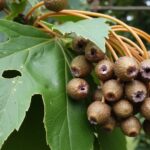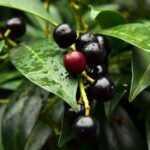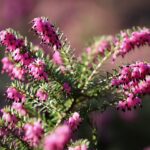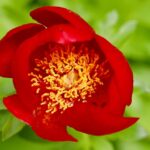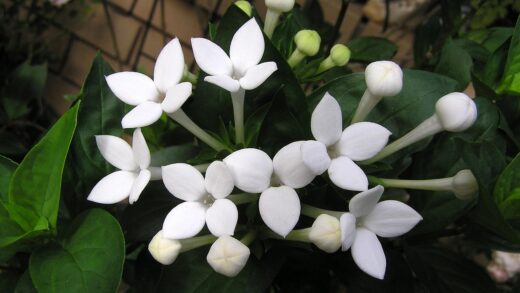The silk acacia, with its delicate, fern-like foliage and stunningly unique, powder-puff flowers, is a tree that brings an exotic and tropical feel to any garden landscape. Proper care is essential to ensure this deciduous tree not only survives but thrives, showcasing its full ornamental potential throughout the growing season. Understanding its fundamental requirements forms the basis of successful cultivation, from initial planting to long-term maintenance. This involves a holistic approach, considering everything from its preferred climate and soil conditions to its growth habits and susceptibility to environmental stressors, ensuring a vibrant and healthy specimen for years to come.
At its core, the silk acacia is a relatively adaptable and fast-growing tree, often favored for its wide, spreading canopy that provides dappled shade. It belongs to the legume family, which gives it the ability to fix nitrogen in the soil, a beneficial trait for surrounding plants. This characteristic, however, does not make it immune to needing proper care; in fact, its rapid growth rate means that any deficiencies or problems can quickly become pronounced. A well-cared-for tree will reward the gardener with a profusion of fragrant, pinkish flowers from early to mid-summer, attracting pollinators like bees and butterflies. Neglecting its basic needs can lead to a sparse canopy, poor flowering, and increased vulnerability to pests and diseases.
The tree’s natural habitat provides significant clues about its care requirements in a cultivated setting. Originating from regions stretching from Iran to eastern China, it is accustomed to warm temperate climates with distinct seasons. This background indicates a preference for hot summers, which are crucial for triggering abundant flowering and ensuring the wood ripens properly. While it can tolerate a range of conditions, it performs best when these native environmental cues are mimicked as closely as possible, particularly in relation to sunlight, heat, and soil drainage. Therefore, successful long-term care involves creating a micro-environment that respects its genetic predispositions.
Ultimately, the goal of a comprehensive care regimen is to foster a tree that is both aesthetically pleasing and structurally sound. This includes proactive measures rather than reactive fixes, such as selecting the right planting site from the outset and establishing a routine for watering, feeding, and inspection. Regular observation allows for the early detection of any issues, whether they are related to nutrient deficiencies, water stress, or the initial signs of pest infestation. By investing time in understanding and providing for the silk acacia’s needs, one can cultivate a magnificent focal point in the garden that offers beauty and interest across the seasons.
Optimal site selection and soil conditions
Choosing the correct location for a silk acacia is arguably the most critical step in its long-term care, as this decision will influence its health and vigor for its entire lifespan. This tree absolutely thrives in full, direct sunlight, requiring a minimum of six to eight hours per day to achieve optimal growth and prolific flowering. A site with a southern or western exposure is typically ideal, as it maximizes heat and light absorption, which are essential triggers for its summer bloom cycle. Insufficient light will result in a leggy, sparse appearance with significantly reduced flower production, defeating the primary purpose of planting this ornamental species.
Beyond sunlight, the physical space required by the tree must be carefully considered. The silk acacia develops a broad, umbrella-like canopy that can easily spread seven to ten meters or more in diameter. It is imperative to plant it far enough away from buildings, power lines, and other structures to prevent future conflicts and the need for drastic pruning. Furthermore, consideration should be given to its root system and the leaf litter it produces. The roots are generally not aggressive, but planting too close to patios or walkways is ill-advised, and the fine leaflets and flower debris can be messy, making it less suitable for planting directly over pristine garden beds or ponds.
The soil itself is another foundational element for a healthy silk acacia. The single most important soil characteristic for this tree is excellent drainage. It is highly intolerant of waterlogged conditions or heavy, compacted clay soils, which can quickly lead to root rot, a fatal condition. The ideal soil is a sandy loam or any average garden soil that allows water to percolate freely. Before planting, it is wise to assess the drainage of the chosen site by digging a hole and filling it with water; if the water does not drain away within a few hours, the site is unsuitable without significant amendment.
To improve soil conditions, amendments can be incorporated into the planting area. For heavy clay soils, incorporating generous amounts of organic matter such as compost, leaf mold, or well-rotted manure will help improve its structure and drainage. Similarly, adding coarse sand or fine gravel can create more air pockets and pathways for water to escape. The silk acacia is adaptable to a wide range of soil pH levels, from slightly acidic to slightly alkaline, so pH adjustment is rarely necessary unless the soil is at an extreme. The primary focus should always remain on creating a well-drained, friable rooting environment.
Watering practices for establishment and maturity
Proper watering is crucial for the silk acacia, especially during its establishment phase. For the first one to two years after planting, the tree is focused on developing a deep and extensive root system, which requires consistent and adequate moisture. During this period, a regular watering schedule is essential, particularly during the dry spells of summer. The goal is to keep the soil evenly moist but never saturated. A deep watering once or twice a week is far more effective than shallow, frequent applications, as it encourages roots to grow downwards in search of water, making the tree more drought-tolerant in the long run.
Once the tree is well-established, its water needs change significantly. A mature silk acacia is remarkably drought-tolerant, capable of withstanding periods of low rainfall without supplemental irrigation. This is thanks to its deep root system, which can access moisture far below the surface. In most temperate climates, natural rainfall is often sufficient to meet the needs of a mature tree. However, during prolonged and severe droughts, even an established tree will benefit from an occasional deep soaking to prevent stress, which can manifest as leaf drop, wilting, or a failure to flower properly.
Recognizing the signs of water stress is a key skill in managing the health of a silk acacia. An underwatered tree will often show symptoms such as wilting or drooping leaves, particularly during the hottest part of the day. The edges of the leaflets may turn brown and crispy, and in severe cases, the tree may begin to shed its leaves prematurely to conserve moisture. Conversely, overwatering is far more dangerous and its signs can be more subtle at first. Yellowing leaves (chlorosis), especially on new growth, and a general lack of vigor can indicate that the roots are waterlogged and deprived of oxygen, which can lead to fatal root rot.
The best technique for irrigating a silk acacia is to apply water slowly and deeply at the tree’s drip line, which is the area on the ground directly beneath the outermost reach of the branches. This ensures the water reaches the active root zone rather than just the area around the trunk. Using a soaker hose or a drip irrigation system is ideal as it minimizes water loss through evaporation and delivers moisture directly to the soil. Applying a two to three-inch layer of organic mulch, such as wood chips or shredded bark, around the base of the tree (but not touching the trunk) will also help conserve soil moisture, regulate soil temperature, and suppress weed growth.
A balanced approach to fertilization
While the silk acacia has the ability to fix its own nitrogen, this does not mean it requires no nutritional support, particularly when grown in poor or sandy soils. A balanced approach to fertilization can promote more robust growth, a denser canopy, and more vibrant flowering. The key is to avoid excessive feeding, especially with high-nitrogen fertilizers. Too much nitrogen will encourage a flush of weak, leafy growth at the expense of flowers and can make the tree more susceptible to certain pests and diseases. Therefore, a cautious and considered fertilization strategy is recommended.
The best time to fertilize a silk acacia is in the early spring, just as new growth begins to emerge. A single application per year is typically sufficient for a healthy, established tree growing in average soil. For younger trees or those showing signs of nutrient deficiency, a second, lighter application in early summer may be beneficial. It is crucial to cease all fertilization by late summer. Late-season feeding can stimulate new growth that will not have sufficient time to harden off before the first frost, making it vulnerable to winter damage.
When choosing a fertilizer, a balanced, slow-release granular formula is an excellent choice. A fertilizer with an N-P-K ratio such as 10-10-10 or 14-14-14 provides an even distribution of essential macronutrients. The phosphorus component is particularly important for promoting strong root development and abundant flowering. Organic alternatives are also highly effective and can improve the soil structure over time. Well-rotted compost or aged animal manure can be spread around the base of the tree in the spring, providing a slow and steady release of nutrients throughout the growing season.
Proper application of fertilizer is just as important as the type and timing. Granular fertilizers should be scattered evenly on the ground, starting about a foot away from the trunk and extending out to the drip line. It should never be piled up against the trunk, as this can cause chemical burns to the bark. After application, the fertilizer should be lightly raked into the soil surface and then watered in thoroughly. This ensures the nutrients are dissolved and carried down to the root zone where they can be absorbed by the tree.
Pruning for health, structure, and aesthetics
Pruning is an important aspect of silk acacia care, essential for maintaining the tree’s health, developing a strong structure, and enhancing its natural, graceful form. The primary goals of pruning are to remove any dead, damaged, or diseased wood, improve air circulation through the canopy, and eliminate any crossing or rubbing branches that could create wounds. A well-pruned tree is not only more attractive but also less susceptible to wind damage and disease. Regular, light pruning is far better for the tree’s health than infrequent, drastic cutting.
The timing of pruning is critical. The best time to perform major structural pruning on a silk acacia is during its dormant period in late winter or very early spring, before the sap begins to flow and new buds start to swell. Pruning at this time minimizes stress on the tree and allows the wounds to begin healing quickly as the growing season starts. Dead or broken branches can and should be removed at any time of year as soon as they are noticed. Avoid heavy pruning in the summer, as this can remove potential flower buds and cause the tree to expend energy on healing when it should be focused on growth and flowering.
For young trees, formative pruning is essential to establish a strong and well-balanced framework. Silk acacias naturally tend to develop low branches and multiple competing leaders, which can result in weak V-shaped crotches that are prone to splitting as the tree matures. It is advisable to select a single central leader or a few well-spaced main trunks and remove competing stems. Subordinate branches should be encouraged to grow at a wide angle to the trunk, creating a stronger connection. This early structural work will prevent many problems in the future.
When making pruning cuts, it is important to use sharp, clean tools to ensure a smooth cut that heals properly. Large branches should be removed using the three-cut method to prevent the branch from tearing the bark down the trunk as it falls. All cuts should be made just outside the branch collar, the slightly swollen area where the branch joins the trunk. This area contains specialized cells that will grow over and seal the wound. Never apply pruning paint or sealant to the wounds, as research has shown that this can trap moisture and hinder the tree’s natural healing process.
Monitoring and managing long-term health
Consistent monitoring is a cornerstone of proactive care, allowing for the early identification and resolution of potential health issues before they become severe. A regular walk-around inspection of the silk acacia, perhaps on a weekly or bi-weekly basis, is an invaluable practice. During these checks, one should examine the leaves, branches, and trunk for any abnormalities. Look for signs of discoloration, wilting, insect activity such as webbing or chewed leaves, or any unusual growths or cankers on the bark. Early detection often makes treatment simpler and more effective.
One of the most significant threats to the long-term health of the silk acacia is a fungal disease known as Mimosa Wilt or Fusarium wilt. This soil-borne pathogen enters the tree through the roots and clogs the vascular system, leading to sudden wilting, yellowing of leaves on one or more branches, and eventual death. There is no cure for this disease. Therefore, prevention is paramount, which includes avoiding any injury to the root system and ensuring the planting site has not previously hosted a diseased tree. If wilt is suspected, it is critical to get a positive diagnosis and, unfortunately, the only management is removal of the tree to prevent spread.
Pest management should follow an integrated approach, prioritizing the least toxic methods first. A common pest is the mimosa webworm, whose larvae create silky webs that bind foliage together while they feed. Small infestations can often be managed by physically pruning out and destroying the webbed nests. For larger outbreaks, applications of Bacillus thuringiensis (Bt), a biological insecticide that targets caterpillars, can be effective when applied to young larvae. Other potential pests include spider mites and scale insects, which can often be controlled with horticultural oils or insecticidal soaps.
Beyond pests and diseases, long-term health is also influenced by environmental factors. The tree’s response to seasonal changes should be noted, such as the timing of leaf-out in spring and leaf drop in autumn. Mulching plays a vital role in long-term health by moderating soil temperature, conserving moisture, and suppressing weeds that compete for resources. A healthy ecosystem around the tree, which encourages beneficial insects and soil microbes, will further bolster its natural defenses, ensuring the silk acacia remains a stunning and resilient feature in the landscape for its entire lifespan.

